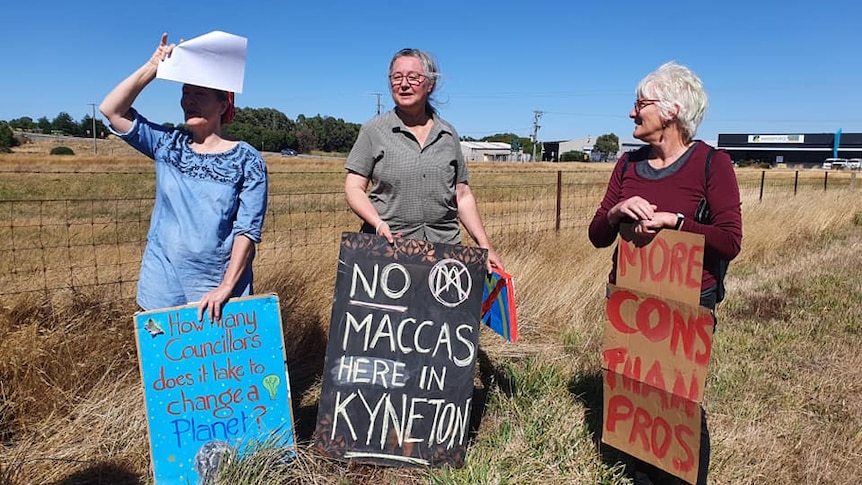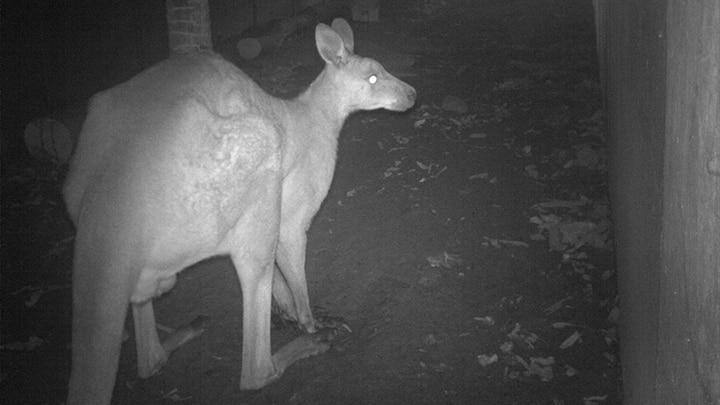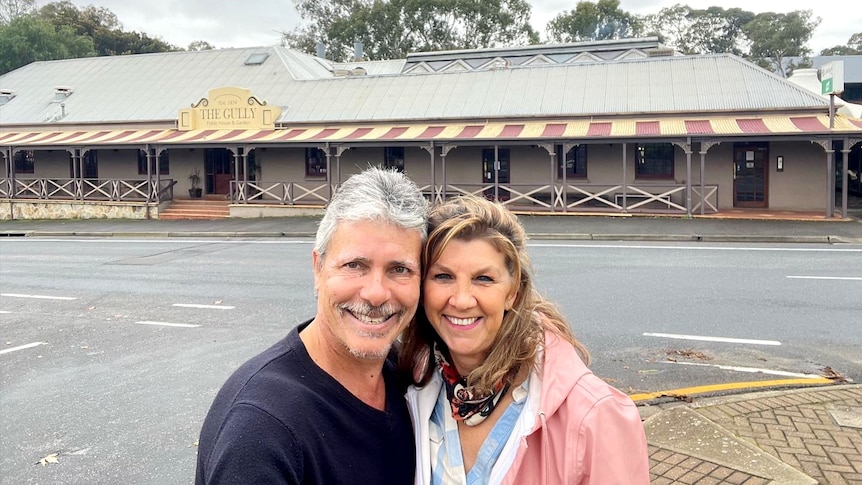Macedon Ranges residents are considering Supreme Court action following a state planning tribunal decision to overturn a council vote to halt a two-part commercial development.
Key points:
- The Victorian Civil and Administrative Tribunal overturned the Macedon Ranges Shire Council’s decision to not grant a planning permit
- The council says it will not pursue legal action over VCAT’s decision
- Residents are considering Supreme Court action over big brands’ development in Kyneton
A Kyneton development for a McDonald’s fast-food restaurant, another restaurant, Bunnings and a 24-hour service station was approved by the Victorian Civil and Administrative Tribunal (VCAT) last week after the applicant decided to challenge the council’s decision and the conditions imposed.
Susan McNab is one of the leaders of the fight against the development and said residents were disappointed by the court’s actions.
She said the group would look at viable options to counter the decision, but accepted that a loss in the Supreme Court would be costly.
“Naturally, we don’t feel the decision is to the benefit of Kyneton. That part of the town is the main access to nearby reserves and people often go out that way climbing and for classic car rallies and cycling,” she said.
“It’s difficult for many residents to not be considered at VCAT.
“It’s been about the economics of the matter. The council said that area would be developed at some point, but this particular style of development works against Kyneton’s character.”
Big brands coming down the highway
The decision almost confirms the introduction of commercial development in Kyneton, which one community group has labeled the ‘tide of overdevelopment’. Residents fear the big brands will take away the small country charm that the town is known for, with small businesses and well-known eateries losing out.
“The proposal will not detract from the rural character of the Shire. The proposal will reinforce the rural character of the Shire by its location [in a commercial zone] within the protected settlement boundary; [and the] containment of its impacts within the subject land,” VCAT’s decision said.
The decision by VCAT has caused a stir on social media after attracting hundreds of submissions airing concerns about traffic and safety, and the effect the development could have on the nearby environment and local economy.
“On my mind is the amount of rubbish! This is devastating,” one social media user, Emma Mattocks, commented.
“Our options on a personal and group level are very limited. We can attempt to appeal the decision on a matter of law and so within 28 days,” Sue McNab wrote to the group.
“That is incredibly expensive, and we would have to pay the other party’s costs if unsuccessful. It’s down to what the shire council may be able to do now.”
Council won’t pursue legal action
Macedon Ranges Shire Council said it was not considering pursuing legal action.
“An appeal of a VCAT decision is made to the Supreme Court of Victoria and must be on a point of law. Council has received communication for the community expressing their disappointment in the decision,” a spokesperson said.
The council’s design guidelines from 2012 showed the council’s aim was to “reinforce” the rural character of the Macedon Ranges, particularly in areas that were visible from main roads, the Calder Freeway, rail corridors, and key public viewing areas and from adjoining rural and residential areas.
Several residents have asked for a review of VCAT’s decisions after a similar development in regional Victoria was not allowed to go ahead. Some also said it was hard for small-town community groups and residents to fight organizations and businesses with lots of money.
The developer claimed there would be a net community benefit for the town and the project would create almost 200 jobs between construction and ongoing employment.
The court has ordered VCAT to remove multiple signs, and reduce the height of one, and resubmit the plans to show those and other changes.
.


